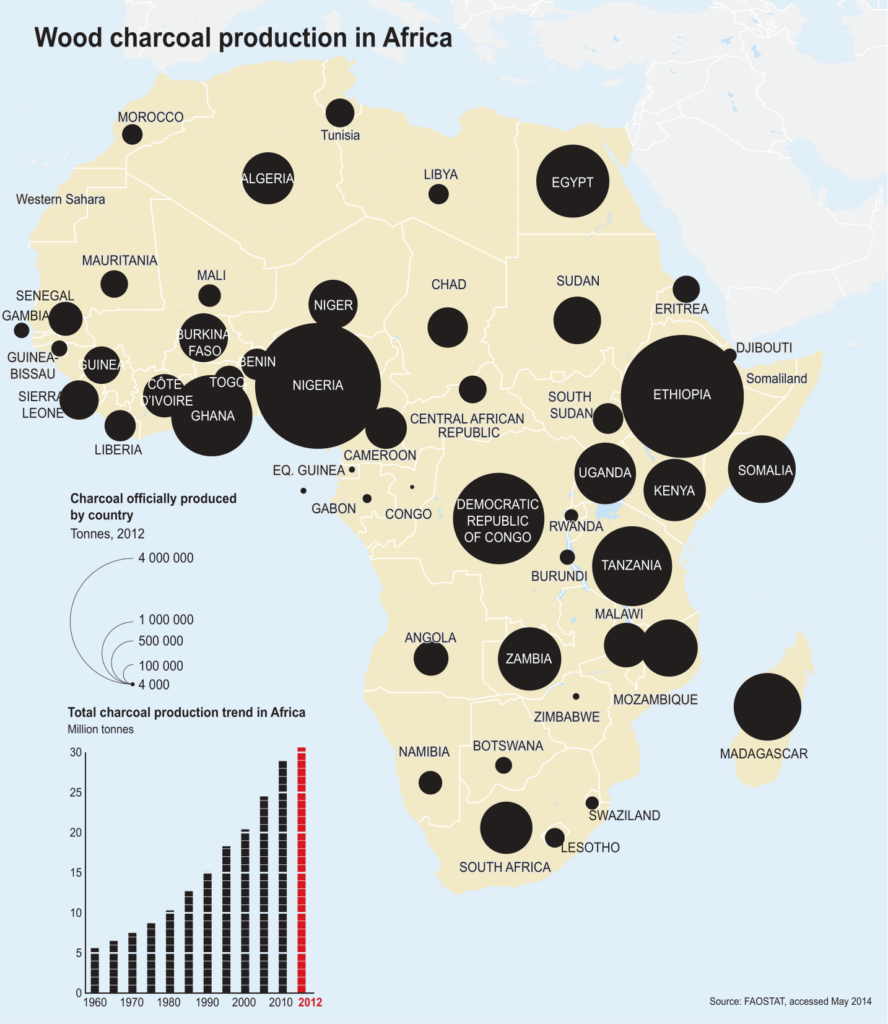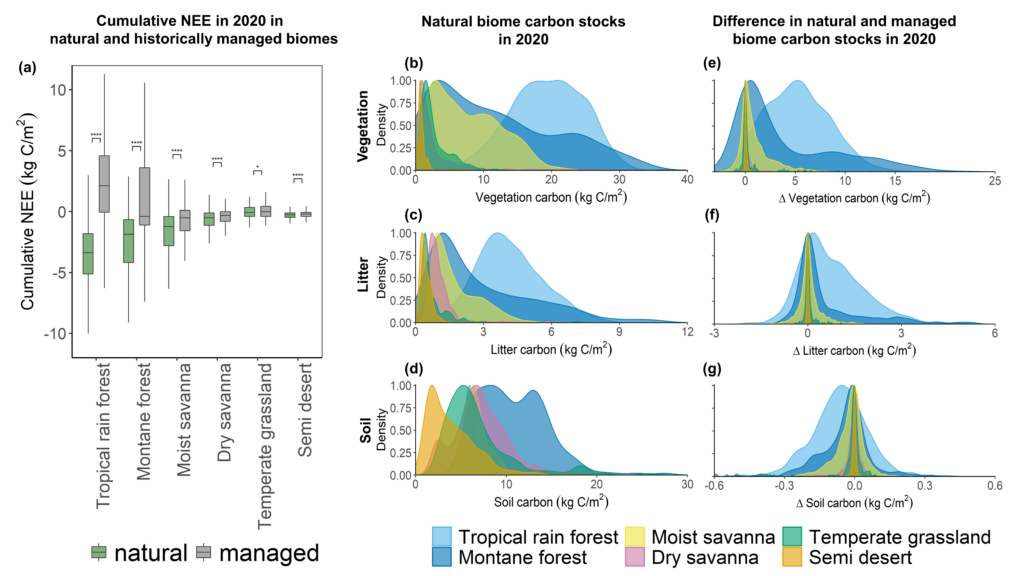Response Doctoral Program
In the vast expanse of sub-Saharan Africa, trees sustain the timeless tradition of producing charcoal; the very charcoal used to grill food at barbecues. Charcoal is a vital energy source fueling households and industries. Having said that, this seemingly innocuous practice of burning wood in a kiln comes at a hefty price tag. Converting trees to charcoal disrupts the delicate balance of carbon in ecosystems, with consequences that reverberate far beyond the local landscape.
The practice of producing charcoal contributes significantly to carbon emissions that drive climate change, and ecosystem degradation through deforestation and loss of biodiversity. In the tropical region of sub-Saharan Africa, charcoal production has been steadily escalating (Fig. 1) and it causes 7% of annual deforestation, corresponding to emissions of 71.2 million tonnes of carbon dioxide and 1.3 million tonnes of methane into the atmosphere. Considering the region’s current socio-economic trends of increasing population and urbanization, these staggering numbers are a cause for concern, as the demand for charcoal is likely to be on the rise in the future, and along with it, the associated carbon emissions. It is a vicious cycle: more demand means more trees felled, more emissions unleashed, and more pressure on the fragile carbon storage in forests.

This begs the question; can charcoal be sustainably produced in the interim, respecting nature as well as society’s needs, while governments work toward ushering in a new era of renewable energy?
This overarching research question has been the focus of Dabwiso Sakala’s PhD research pursuits. He is a doctoral student of the Earth System Science group at the University of Zurich as well as a RESPONSE fellow in the PhD program Science and Policy.
What evidence was useful for policy-making?
Dabwiso’s research identifies regions where current charcoal production practices are unsustainable, such as tropical rain forests and mountain biomes in sub-Saharan Africa (Fig. 2).

These biomes with higher biomass are not an infinite resource of charcoal. To the contrary, they are disproportionately affected even by low biomass harvesting rates particularly due to their need for prolonged recovery periods. These findings (Fig. 3) are useful guidelines for designing management plans in these biomes that are mindful of the intensity and frequency of charcoal production. This can ensure that carbon balances are maintained and these ecosystems are not degraded in the long run.

Furthermore, Dabwiso’s current research indicates that land-use change, like deforestation for agriculture and charcoal, is a larger threat than climate change on the African continent. As populations and urbanization increase in sub-Saharan Africa, the demand for charcoal and other land-based resources like agricultural land are expected to increase in the future. The key findings from this research emphasize the urgency of addressing unsustainable land-use practices, particularly in biomes vulnerable to intensified agriculture and charcoal production. This is inevitable for mitigating carbon emissions and ensuring the long-term sustainability of Africa’s ecosystems.
What are suggestions for policy from scientific outputs and how can they be translated?
The scientific outputs inform sub-Saharan African climate change policies on the necessity for considering societal energy needs and environmental protection in tandem, and bridging the gap between both. Policymakers should integrate sustainable charcoal production with modern energy solutions, recognizing the current affordability challenges of alternative energy sources for low-income households. Furthermore, policies should be tailored to local contexts within the diverse regions of sub-Saharan Africa, taking into account dominant ecosystem types and existing land-use practices. The knowledge gained from this research guides policies in prioritizing and promoting sustainable charcoal production and land management practices. For example, the detrimental impacts of land-use change highlight the need for innovative practices like agroforestry, where trees are integrated alongside crops on the same land for a sustainable future. This also serves as a pathway for leveraging existing sustainable land management practices and promoting them to meet other sustainable development goals simultaneously.
The key findings of Dabwiso’s research call for policies that encourage innovative practices, considering both land-use management and climate mitigation strategies. This approach would balance enhanced carbon capture while meeting the needs of the growing population in the region. It is a challenge worth tackling for the sake of our forests, our climate, and future generations.

Dabwiso Sakala is a fellow of the RESPONSE Doctoral Program (DP) «RESPONSE – to society and policy needs through plant, food and energy sciences» funded by the European Union’s Horizon 2020 research and innovation program under the Marie Skłodowska-Curie Grant Agreement No 847585.
This article is co-authored by Dabwiso Sakala and Mary Ann George (University of Zurich, RESPONSE Program office assistant).
The featured image was generated by AI (Copilot, Designer) on 31 May 2024 at 1:46pm using the prompt: “A rain forest with sun rays shining through the trees into rich jungle greenery, creating an atmospheric fantasy forest with pieces of charcoal lying in the center being hit by the sunlight, with the sun lower in the horizon”.

